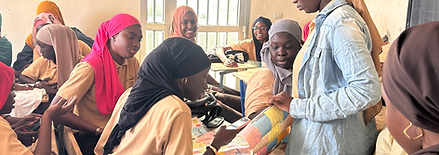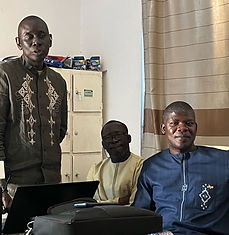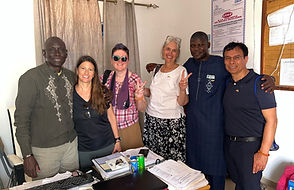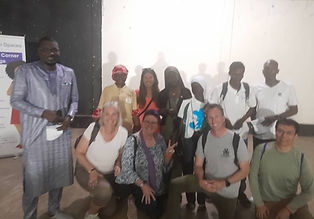
Guiding Questions
1. What effective strategies do Senegalese teachers use to foster student motivation and cultivate a growth mindset, and how can these methods enhance student engagement and ownership of learning?
2. How do Senegalese educators cultivate global competence among their students, and how can these approaches prepare students for an interconnected world?
When I asked many Senegalese teachers about their strategies to foster motivation and cultivate a growth mindset to engage students, I rarely received a straightforward answer. Instead, I was met with shoulder shrugs and responses like, “Let me think about it.” I realized I needed to see their classrooms for myself.
What I expected to encounter was something similar to my everyday experience—a classroom balanced with technology, sprinkled with entertainment, and layered with rigorous learning. What I found was something entirely different.
Stepping into an overcrowded Senegalese classroom, where students sat shoulder to shoulder and the stifling hot air filtered through the open window, I wondered how teachers could possibly motivate these teenagers to learn and practice their English and grammar. I, for one, was already dripping with sweat and distracted by the heat.
Yet, the moment the students saw their teacher, they all stood simultaneously, greeted him with a unified “Good morning,” and quickly took their seats. A student monitor, holding a large, vividly illustrated book—reminiscent of a Harry Potter spellbook—began taking attendance. Clear routines were in place, and students clearly took ownership of their learning, with the teacher reminding them, “This is your classroom, not mine.”
For the next two hours, the teacher engaged the students, seamlessly moving from one activity to the next while maintaining their full attention. Students snapped their fingers—a respectful Senegalese custom—to get the teacher’s attention. Their eyes remained fixed on him as he incorporated music and singing instead of merely reciting sentences. When it was time for a movement break, not a single student refused to participate. They then transitioned into game mode, using the 1 projector the school owns, to practice their newly acquired skills, sharing a few handheld devices and using the teacher’s mobile hotspot to access online resources. Throughout the lesson, the teacher showered students with positive feedback and high fives.
There was no flashy technology, no SMART Boards to captivate attention. Instead, it was the teacher’s charisma and the deep respect the students held for him that created a dynamic learning environment. The teacher employed best practice strategies—modeling, differentiation, clear objective setting, and scaffolding. Above all, he embraced what educators are reminded of every school year: build relationships. He listened attentively to students, challenged their thinking, and gave them ownership of their learning. He recognized and reinforced each student’s effort and modeled perseverance—encouraging students not to give up but to struggle through challenges.
The respect the students had for their teacher translated into a genuine desire to succeed. This was evident in every classroom and school we visited. Students were deeply invested in their learning, not only mastering core subjects but also exploring family and societal values, local and global issues, and multiple languages.
Teachers regularly receive training on integrating technology and new curricula, even though many schools lack widespread technological infrastructure. Educators encourage students to engage with their history and culture alongside pressing global concerns. Global issues and the UN Sustainable Development Goals (SDGs) are woven into daily lessons.
At one school, students painted murals highlighting the dangers faced by Senegalese youth who risk their lives crossing the sea in search of better opportunities. Through the nationwide Who’s the Best competition, students develop skills in English, U.S. government, and argumentation. These initiatives prepare students for an interconnected world by fostering cultural awareness, empathy, and collaboration across diverse perspectives.
One lesson we reviewed focused on road safety worldwide, utilizing data from the World Health Organization. Another examined the UN SDGs with an emphasis on climate change. A third explored Nelson Mandela’s legacy in relation to contemporary human rights advocacy. One school principal shared that he was furthering his own education on the SDGs to better support his teachers in delivering structured, informed lessons.
It is clear that Senegalese educators are deeply invested in their students’ futures and learning. Equally evident is the affection and respect students have for their teachers. This experience was a powerful reminder of what can be achieved with limited resources. At the heart of it all lies the essential element of relationship building.












